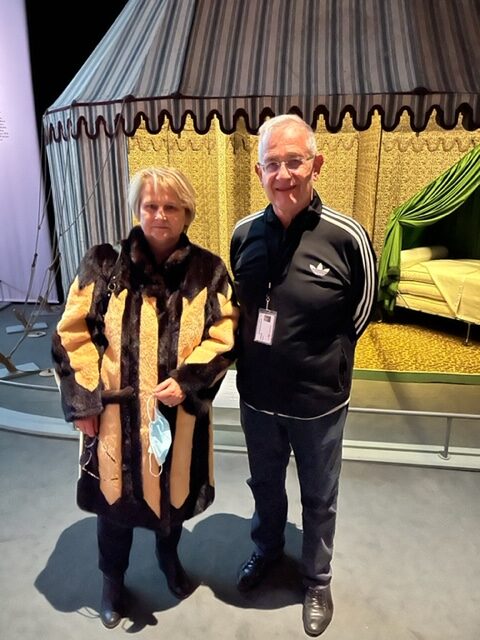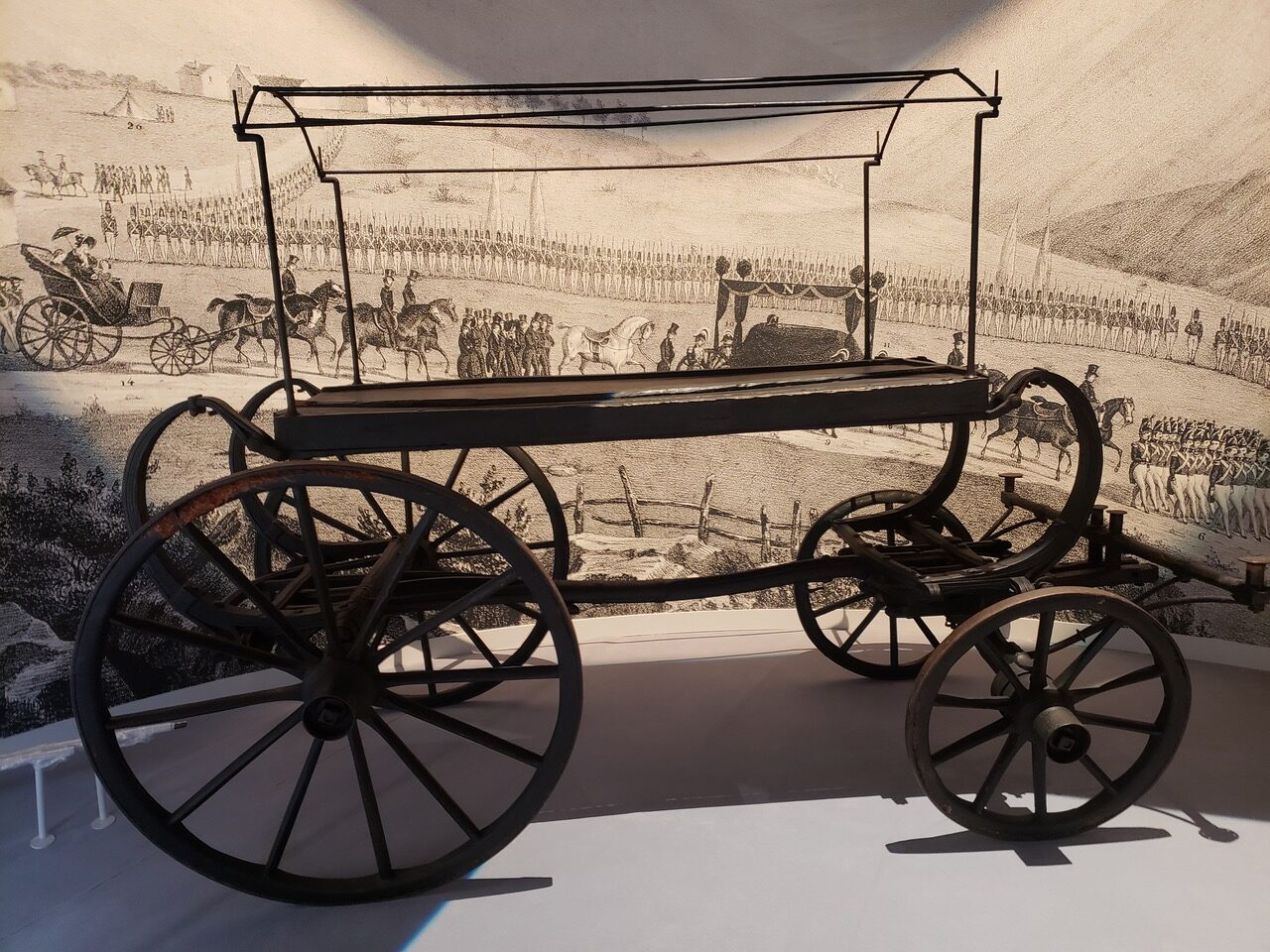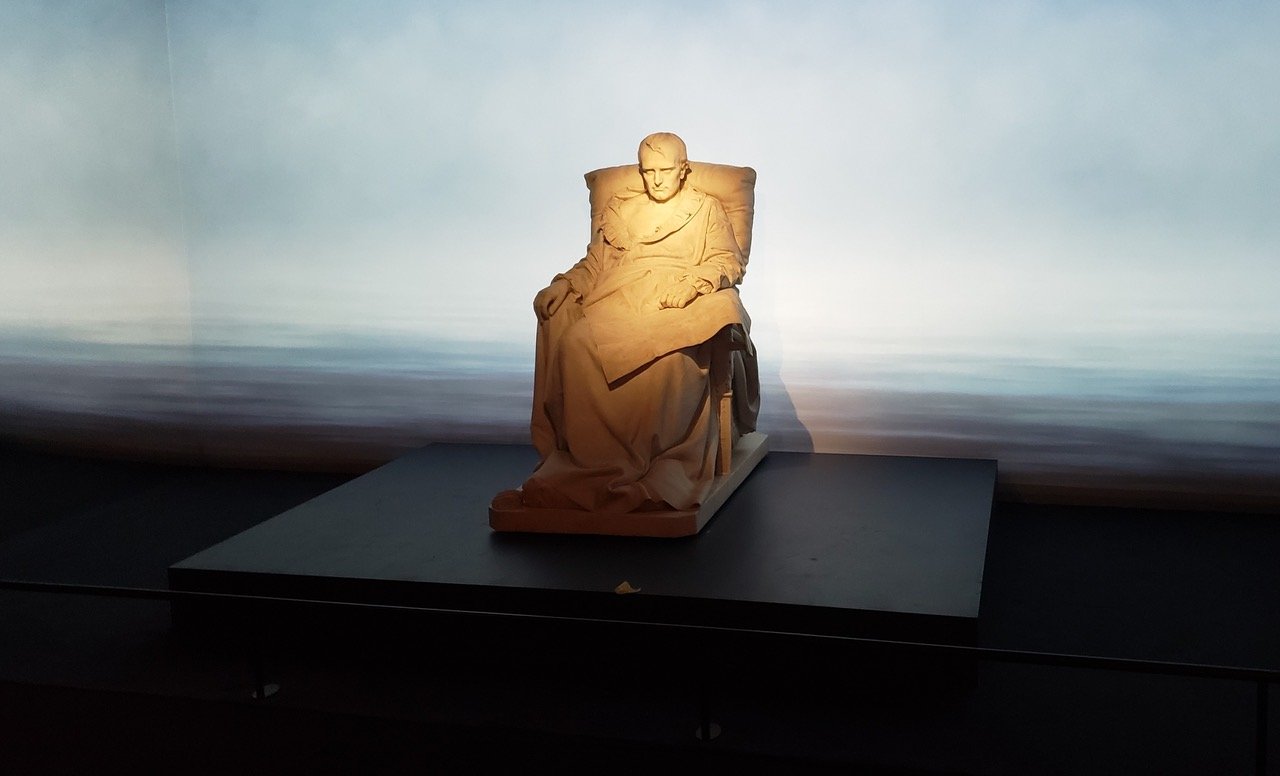
Invited by Bernard Chevalier, one of the Commissioners of the Napoleon Exhibition, Christophe Giovannetti, President of the UNF and Carole Berte, Administrative Director of the UNF wanted to shed special light on this exhibition and invite as many people as possible to attend this exhibition.
This exhibition organized on the occasion of the bicentenary of the death of Napoleon Bonaparte is aimed at the general public. The man is presented there in what he has most popular, that is to say famous, his life in what it has most romantic, his work in what it has most exceptional, fresco dazzling of a founding era of modern France.
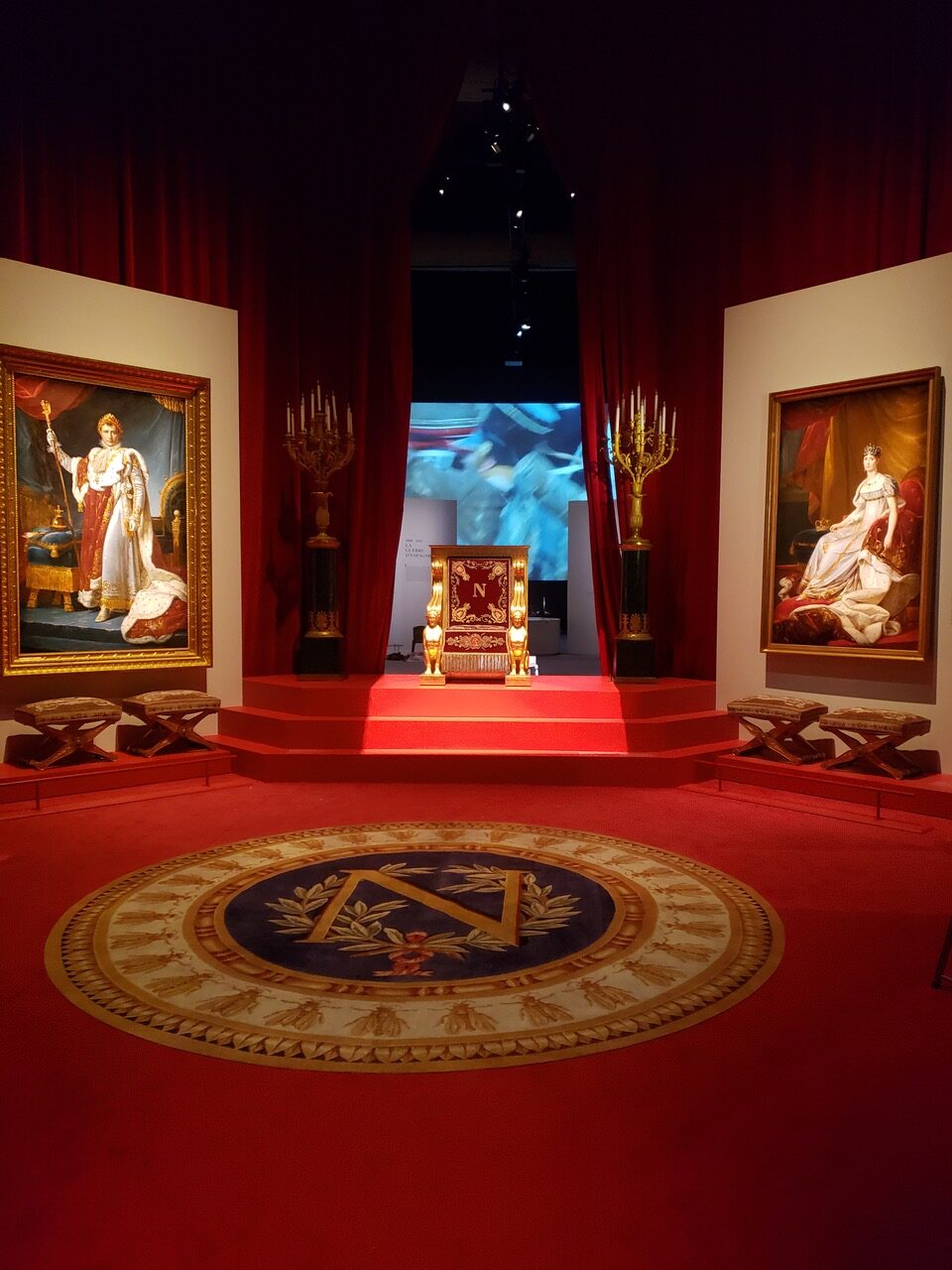
In addition to evoking the rise, heyday and decline of the most famous emperor, this exhibition reveals a man whose personality lives up to his worldwide reputation. Flamboyant, the life of Napoleon is a spectacle in itself. This event intends to be, in its form, a story, of course, but also a staging backed by the history of France. We also discover that Napoleon is at the origin of most of the institutions of our Republic, and that he himself is, through his life, the incarnation of egalitarianism carried by the French Revolution.
The exhibition is structured around nine parts : the apprenticeship years at the military college of Brienne ; the campaigns of Italy (1796) and Egypt (1799) ; the coup d’état of 18 Brumaire and the Consulate ; the advent of the Empire ; Intimate Napoleon, his wives, Joséphine then Marie-Louise, his son, the King of Rome ; Napoleon, the warlord ; Napoleon and Europe, at the head of which he places his sisters and brothers ; the decline of the Empire, illustrated by two military failures, the Spanish Campaign (1808) and the Russian Campaign (1812) ; the Hundred Days and its final fall after the Battle of Waterloo..
The exhibition uses masterpieces from the main national collections such as the Louvre, the Army’s museums in Salon-de-Provence, Versailles, Malmaison,
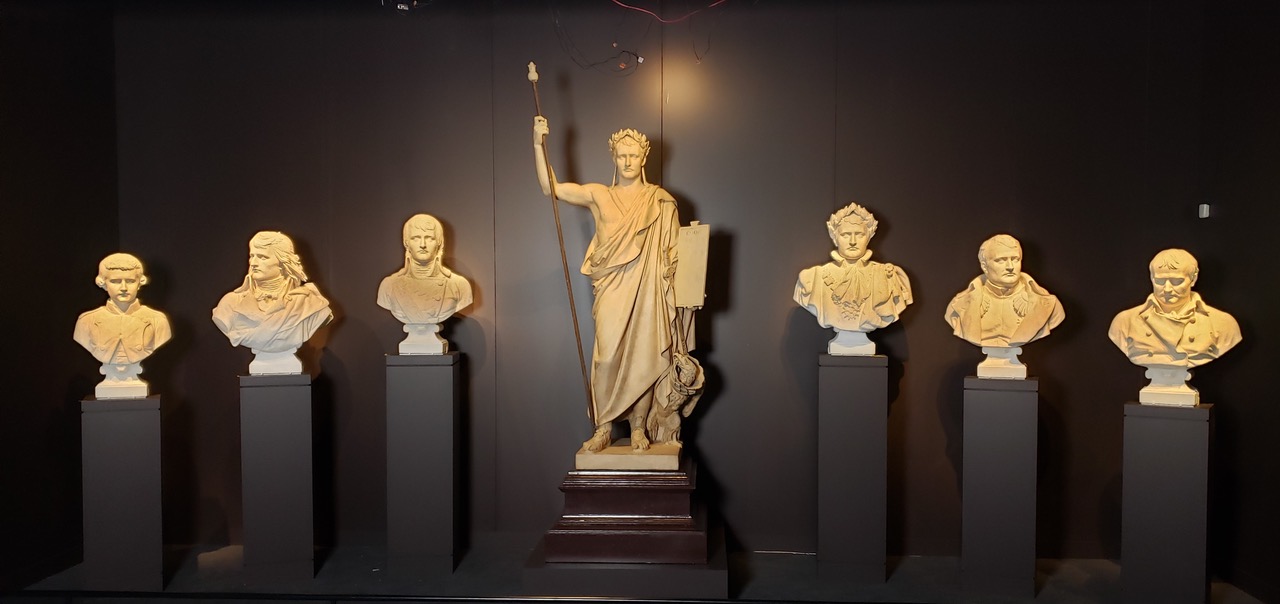
Fontainebleau, Mobilier national, the Fondation Napoléon, the Banque de France, the Senate, the Legion of Honor museum as well as those of the Conservatory of Arts and Crafts, the Eckmühl room in Auxerre, the museum of sedentary gunners in Lille and the Orleans Museum for Biodiversity and the Environment.
Several atmospheric spaces evoke the arts and court life at this time, which only lasted about fifteen years ; first as a result of the Egyptian campaign, which marked the spirits so strongly, are presented furniture and works of art created in the Egyptian style, while a living room shows the evolution of the style during the heyday of the Empire. The monumental evocation of a throne room parallels a table set with the richest productions of the Empire style. These spaces are completed by magnificent court clothes, luxury weapons, decorations, Sèvres porcelain, pieces of goldsmith’s work, and even a monumental car ordered for his marriage to Marie-Louise as well as the most modest. funeral chariot used for his funeral in Saint Helena. There are also personal items that belonged to him as well as the spectacular country tent furnished with its original furniture ; war will not be absent from this evocation with a cannon, an ammunition box and several mannequins both on foot and on horseback. Let us not forget the many sculptures that will accompany the paintings made by the greatest painters of the time such as David, Gros or Gérard.
Organized by the Réunion des Musées Nationaux, it is presented at the Grande Halle de la Villette until December 26, 2021 and prepared by several curators including Bernard Chevallier, former director of the National Museum of Chateau of Malmaison and Bois-Préau.
